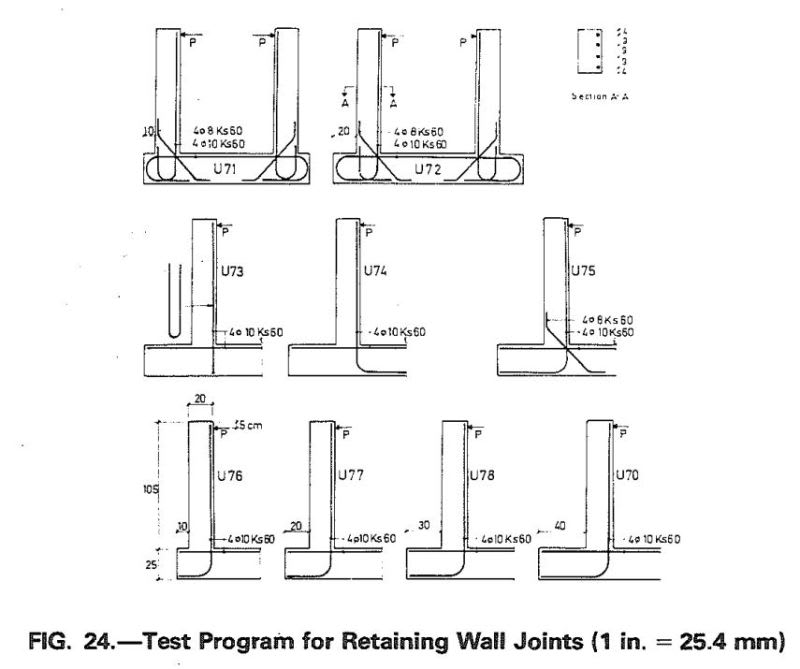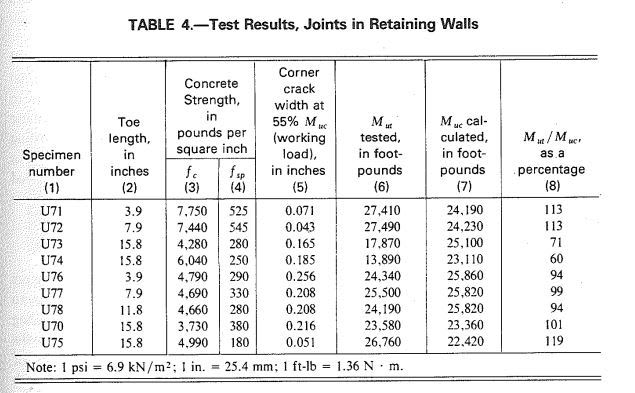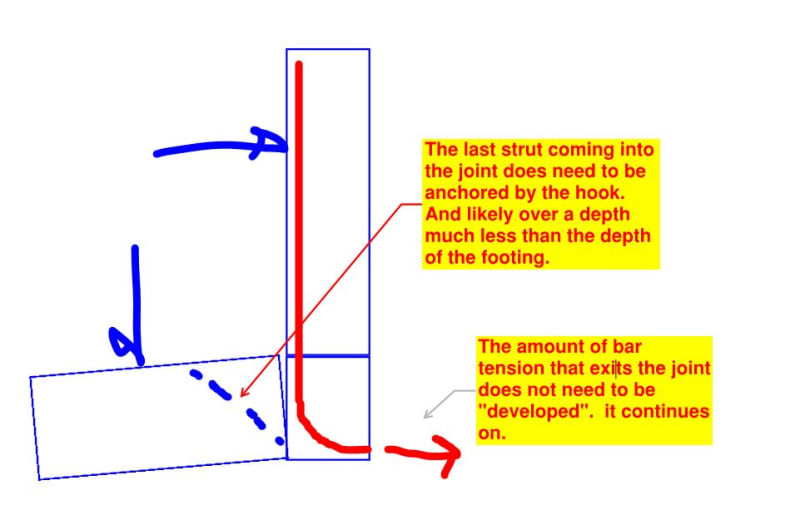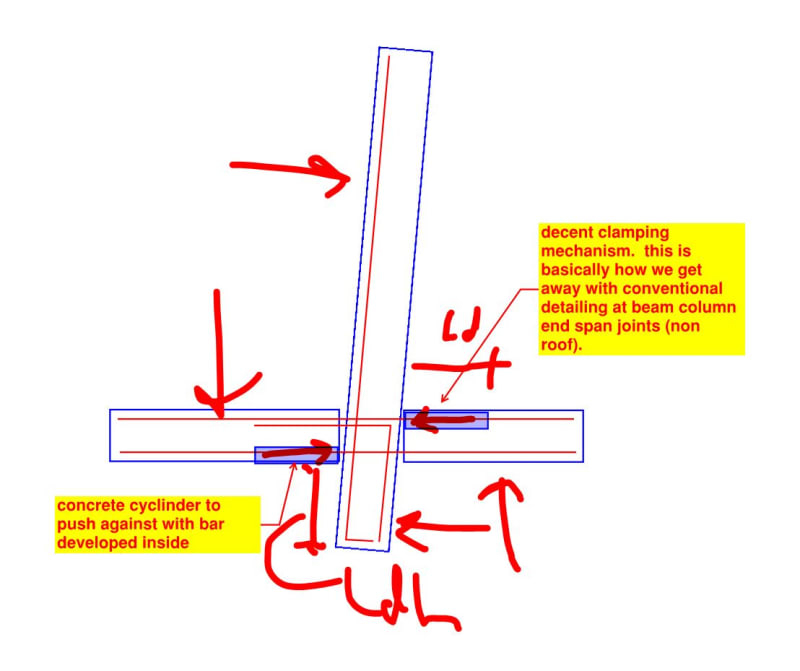thejonster
Structural
I'd love to reduce the dev length for my retaining wall bars in the footing making a more efficient use of concrete using a longit bar in the corner of my standard hook. This would be analogous to a stirrup hook, which works in beam shear with small dimensions, right? A force is a force. It's not allowed by ACI318 for standard hooks, but perhaps a conversation should be started to make that a new reduction factor
I'm usually good at finding pertinent discussions, but can't find anything in the forum on this
I'm usually good at finding pertinent discussions, but can't find anything in the forum on this

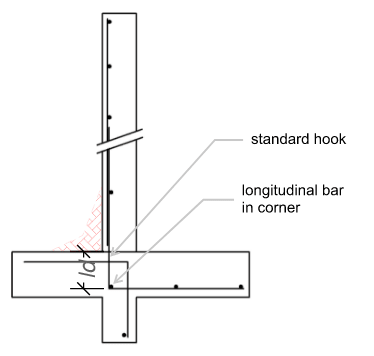
![[love] [love] [love]](/data/assets/smilies/love.gif)
